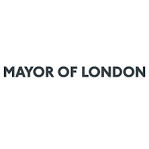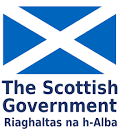PRESS RELEASE : Chief Medical Officer’s Annual Report on Air Quality shows Mayor’s success in bringing down air pollution [December 2022]
The press release issued by the Mayor of London on 8 December 2022.
Chief Medical Officer’s Annual Report on Air Quality shows Mayor’s success in bringing down air pollution
- Report shows life-long dangers of air pollution and the need to act
- NO2 concentrations alongside roads are estimated to be 20% lower in inner London and 44% lower in central London than they would have been without
the ULEZ and its expansion - The projected reduction in PM2.5 exhaust emissions from the expansion of the ULEZ to include inner London is 35%
- The number of state primary and secondary schools in London in areas exceeding the legal limit for NO2 fell from 455 in 2016 to just 20 in 2019
- London’s air quality policies have narrowed the inequality gap in exposure to air pollution, with a reduction in the difference in exposure to toxic air between and most and least socio-deprived economic groups of up to 50% between 2013 and 2019
- Mayor echoes CMO’s conclusion that “the path to bringing down air pollution is clear, we just need to follow it”.
The success of the Mayor’s policies in tackling air pollution in London have been highlighted by the Chief Medical Officer Professor Sir Chris Whitty in a major national report urging faster action to improve air quality and tackle all sources of air pollution across the country.
Today the Chief Medical Officer Professor Sir Chris Whitty published his annual report which this year focused on air quality and the dangers of air pollution throughout our lives – from affecting foetuses in the womb to links with dementia in old age.
The report highlighted the successes of the Mayor’s air quality policies in improving air quality in London and shone a spotlight on the work still to be done in tackling air pollution regionally and nationally.
In the report, although he noted there was still work to be done in reducing London’s air pollution, he cited London as a case study for tackling toxic air by reducing air pollution in public spaces through policies such as the ULEZ, School Streets and investing in better walking and cycling routes.
Thanks to the ULEZ and its expansion, harmful NO2 concentrations alongside roads are estimated to be 44 per cent lower in central London and 20 per cent lower in inner London than they would have been without it. Reductions in air pollution in London have helped contribute to reduced childhood asthma hospital admissions.
Expanding ULEZ London-wide will mean 5 million more people breathing cleaner air, and will save 27,000 tonnes of CO2 in outer London, nearly double that which the central London ULEZ achieved in its first year of operation. Amongst other improvements, the expansion is forecast to make further progress to reduce air pollution, by reducing nitrogen oxides (NOx) emissions from cars and vans in outer London by 10 and 7 percent respectively, and reducing PM2.5 car exhaust emissions in outer London by nearly 16 per cent, benefitting five million outer London residents.
Since 2016 the network of protected cycle space across the city increased fivefold, 250 new or improved pedestrian crossings have been installed and 25 of the capital’s most dangerous and intimidating junctions have been changed to make them safer for walking and cycling. The report highlights that in 2020 the proportion of journeys taken by bike increased by 48 per cent from 2019, and the proportion of journeys on foot increased by 22 percentage points[1]. Although this behaviour was partially driven by the pandemic, it shows the potential for behaviour change and the wider adoption of active travel.
The Mayor and TfL have supported London Boroughs to deliver more than 500 school streets, and the number of state primary and secondary schools in London in areas exceeding the legal limit for NO2 fell from 455 in 2016 to just 20 in 2019.
Communities with higher levels of deprivation, or a higher proportion of people from a non-white ethnic background, are more likely to be exposed to higher levels of air pollution. However, London’s air quality policies have helped to narrow this gap by up to 50 per cent since 2013.[2]
Part of this success is due to the Mayor’s flagship ‘health in all policies’ approach, putting improving the health of Londoners and tackling health inequalities at the heart of all policies from TfL to the Violence Reduction Unit.
The Mayor’s work has shown the potential to improve air quality in the rest of the UK as he has done in London, and he welcomes the recommendations in the report to improve both outdoor and indoor air pollution.
The CMO report makes 15 recommendations – many of which London is also leading the way on, from making air quality central to local urban planning, through requiring developers to work to enhance air quality, to looking at ways to reduce indoor pollution and raising awareness about the effects of open fires.
The Mayor of London, Sadiq Khan said: “This report shows London is a world leader when it comes to tackling toxic air. I’m proud that we’ve managed to reduce air pollution by almost half in central London due to the success of our Ultra Low Emission Zone, but thousands of lives are still being lost prematurely due to poor air quality. There is still much work to do, particularly in outer London where we have the greatest number of premature deaths due to the poisonous air people are breathing. That’s why I am expanding the Ultra Low Emission Zone London-wide, which will ensure five million more Londoners are able to breathe cleaner air.
“I am doing all I can to reduce air pollution and create a greener, healthier city for all, but our efforts alone will not be enough. I welcome the recommendations in the Chief Medical Officer’s annual report. We need to all work together – the Government, regional government, public bodies and health organisations – and use our collective strength to go further and faster than ever to tackle the scourge of toxic air.”
Professor Kevin Fenton, London regional director for public health said:
“Improvements in air quality have already led to better health in Londoners – we’ve recently seen reduced childhood asthma admissions, and further action will undoubtedly lead to a fall in coronary heart disease, stroke, lung cancer and many more serious illnesses.
“There’s still plenty to be done – air pollution harms our health throughout our entire lifespan, and will affect some communities more than others. It’s vital that we continue to improve the quality of the air we breathe and help all Londoners to live longer, healthier lives.”
Professor Chris Whitty, Chief Medical Officer said: “Everyone is affected by air pollution, and it is everyone’s problem.
“Air pollution has improved and will continue improving provided we are active in tackling it. We can and should go further – and it is technically possible to do so.”
Louise Krupski, Cabinet Member for Climate and Environment, Lewisham Council said: “Tackling air pollution goes hand in hand with addressing climate change, which is vital to improve our health and reduce health inequalities. It’s clear that great progress, has been made to bring down air pollution ,including by introducing the Ultra Low Emissions Zone. London is a fantastic example that other cities in the UK can follow of how to reduce it at a local level. We must now all work together and recognise the recommendations in the report so we can reduce the harm caused by toxic air both to our health and our planet.



